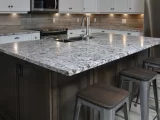Signs You Need a New Roof
August 24, 2024Your roof is an essential element of your home, protecting you and your possessions from weather elements. Therefore, regular inspection should take place.
Early identification and resolution of issues can save time and money in costly repairs in the future. Watch out for these signs that indicate your roof requires replacement.
1. Loose or Damaged Shingles
An old roof can be an enormous burden on your home, leading to water damage, mould and moss growth that requires expensive repairs or even complete replacement. Therefore, it is vital that you monitor its state regularly; loose or damaged shingles could be an early indicator that its lifespan has come to an end.
Use a ladder to access your attic, and examine its roof boards. Light should not seep through, which would indicate leakage of some kind.
Examine the flashing around vents, skylights and chimneys; often made of cement or tar, it should be replaced with an effective metal flashing system to seal watertightness more effectively.
2. Loose or Damaged Granules
Cracked or missing shingles may be indicative of either storm damage or regular wear and tear, so if you see many instances, consult an expert for assistance.
Loose granules can be an indicator of roof age and condition. Although some loss is natural, excessive loss can result in bald spots exposing black asphalt and increase your risk for water leaks.
When you experience widespread granule loss after a severe storm, take it as an indicator that it’s time for a roof replacement. Consulting a professional inspector can help identify whether manufacturer defects are at play; then filing for warranty claims as appropriate – potentially mitigating leaks and costly damages to your home from leakage and manufacturer defect-induced leaks.
3. Vegetation or Algae Growth
Moss and algae growth on your roof is often an early indicator that it may be time to replace it, either due to debris accumulation, not enough sunlight hitting it or overhanging trees. Furthermore, it could indicate your roof has begun rotting or has become damaged; they’re easy to remove but they signal that its lifespan has come to an end and should be replaced as soon as possible.
Black streaks on your roof could be indicative of algae growth and should serve as an early warning that it’s time to replace the roof. Moisture entering can damage insulation materials, leading to mold or rot in the attic space and eventually structural failure of your home.
4. Sagging or Damaged Roof Deck
An important purpose of roofs is protecting homes. As such, they’re commonly known as the “roof over your head.” However, when your roof begins to sag or leak due to leaks, algae growth or age it signals structural integrity has been compromised and should be repaired as soon as possible.
Sagging roofs are a sure sign it’s time for replacement, whether from looking from the street or going up into your attic to check for dips or curves in the roofline, or when water stains appear on rafters or insulation material indicating its failure. When any of these signs appear it is time to contact local roofing experts as quickly as possible for assistance.
5. Damaged Valleys
Roof valleys provide a means for rainwater and snowmelt to drain from roofs, while their improper construction or damage could cause leaks and water damage in homes.
Leaks or damages to roof valleys are telltale signs that it’s time for replacement of an entire roof system. A professional residential roofing company can inspect your roof for signs of wear-and-tear and recommend repairs necessary to protect against water infiltration into your home.
Leaks or damaged valleys can result from various factors, including age, storms, improper installation and lack of regular maintenance. Furthermore, debris such as leaves or tree limbs can collect in roof valleys, hindering rainwater or melting snow flow. A roofing contractor can trim tree limbs as needed and clear away debris in order to create an efficient roof valley system.





